Windows Phone 8.1 Review
by Anand Lal Shimpi on April 14, 2014 10:00 PM EST- Posted in
- Smartphones
- Microsoft
- Mobile
- windows phone
- Windows Phone 8.1
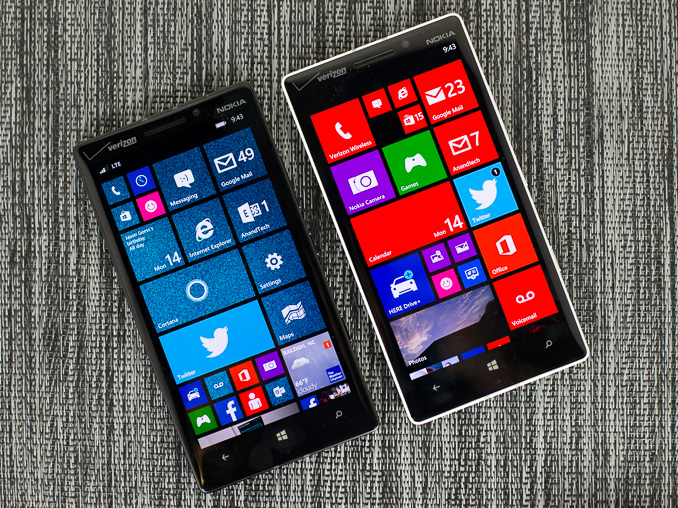
I was an early fan of Windows Phone 7. I remember completely switching over to the platform for about a month back in 2010, and being relatively happy. It wasn’t until I needed tethering support (which didn’t exist in the first release of WP7) that I had to move away. Unfortunately, Microsoft’s software and hardware update cadence for Windows Phone couldn’t pull me back.
In its first three years of existence, Windows Phone received roughly the same number of major updates as Android and iOS. From 2010 - 2013, Google took Android from Gingerbread to KitKat, Apple revved iOS from version 4 to 7, and Microsoft gave us Windows Phone 7, 7.5 and 8.0. At best, you can consider the software release cadence competitive. At worst, it’s not enough. Windows Phone started behind both Android and iOS. To come out ahead, Windows Phone updates had to be more substantive, more frequent or both.
The same could be said about hardware. Microsoft lagged behind Apple and Google to dual-core, 28/32nm silicon, higher resolution displays, and LTE support among other things. Although the situation has improved over the past year, if the goal is to take the #1 or #2 spot, the upgrade cadence needs to be more aggressive.
It always felt like the point of Windows Phone was to be a midpoint between the flexibility of Android and iOS’ guarantee of a certain level of user experience. The platform was born during a time when Android was not yet ready for the mainstream (Gingerbread) as an iOS alternative, and when it still looked like the Windows licensing model would work for handset OEMs.
Today the world is a different place. Android is far more mature than it was in 2010, and it’s polished enough where it can easily be a solution for the enthusiast as well as the first time smartphone user. While Microsoft’s strategy in 2010 might have been one of eyeing the crown, in 2014 the strategy is more humble and focused.
Improve the platform, address issues both little and big, and continue to grow. That’s the mantra these days and today we see it put in action with the arrival of Windows Phone 8.1, the fourth major release of the platform since its arrival in 2010.
I’ve spent the past few days using a Nokia Lumia Icon with the Windows Phone 8.1 developer preview (software available today). All devices capable of running Windows Phone 8 will be getting the 8.1 update for free over the next couple of months. Any new hardware vendors looking to ship Windows Phone 8.1 will be able to do so without paying Microsoft any licensing fees for the software itself.
Although the biggest change to Windows Phone 8.1 happens to be at the API level (including support for universal apps that can run on PCs, tablets and phones), there are a number of user facing feature enhancements that are worth talking about. Microsoft’s reviewer’s guide for Windows Phone 8.1 clocks in at 239 pages, so there’s no way I’ll be able to get to everything here, but I’ll go through several of the highlights.
Start Screen Updates
With the GDR3 update to Windows Phone 8, Microsoft added support for a third column of medium sized tiles on 1080p devices with a large display. With Windows Phone 8.1, that flexibility comes to all devices.
The third column is pretty nice, although admittedly the Lumia Icon I was testing WP8.1 on already had it thanks to the WP8.0 GDR3 update. You can use the third column to either have an insane amount of tiles on the display at once or keep everything nice and spread out. Windows Phone ends up covering the broadest spectrum of information density on its home screen as a result.
The other big change to the start screen is you can now set a photo as a background, instead of being limited to just white/black. With a photo as your background, your live tiles become transparent and allow your background to show through. Tiles that have a colored logo (e.g. Xbox Games, Facebook app) as well as any hub tiles (e.g. People) remain opaque. Despite going through three major revisions of the OS, Windows Phone hasn’t really changed much visually since its introduction in 2010. The ability to personalize the start screen goes a long way in making the UI more interesting.
The multitasking UI gets a slight update as well in WP8.1. You still tap and hold the back button to activate the UI, but you can now quit out of apps by swiping down on the app’s card.
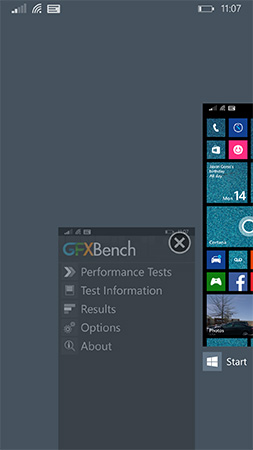
This is quite similar to what’s supported under iOS 7 (where it’s swipe up to quit). Unlike the iOS implementation however you can only swipe down one app at a time.
Revised System Specs
At the introduction of Windows Phone, Microsoft required that all OEMs have a physical camera button in addition to physical or capacitive buttons for back, home and search. It didn’t take long for Microsoft to remove the physical camera button requirement. With Windows Phone 8.1 the back/home/search buttons can be relocated on-screen, similar to what’s done on many Android handsets today. To accommodate those devices that inevitably ship without dedicated OS buttons, the screenshot button combination has changed from Power + Windows button to Power + Volume up.
The adjusted hardware requirements should make it easier for OEMs to take an existing Android hardware design and port it over to Windows Phone.
People Hub API, Disconnected Music+Videos Hub
When Windows Phone launched one of the major focal points was the People Hub, a single location for all of your contacts across all accounts/social networks. Previously you had to add accounts to Windows Phone in order for the People Hub to grab contacts from those accounts. With Windows Phone 8.1 Microsoft moves the People Hub from a push to a pull based service. If a 3rd party app supports it, all you need to do is login to the app itself and the People Hub will automatically pull in data from the app. Facebook is the best example of this as you no longer need to login to the Facebook app and then add your Facebook account separately to the People Hub. It’s a subtle change but one that echoes Microsoft’s new position on Windows Phone: rather than you conforming to Windows Phone, the OS should try and conform to you.
The other big hub change is the Music+Videos hub has been split up into two individual apps, each which can be updated independently of the OS.


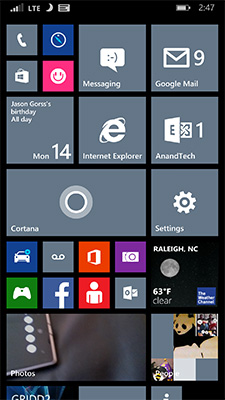
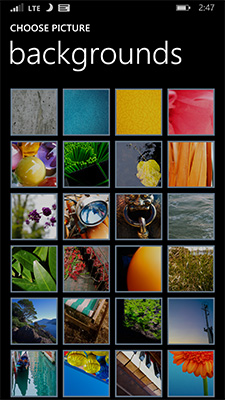

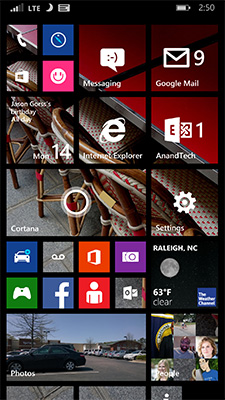
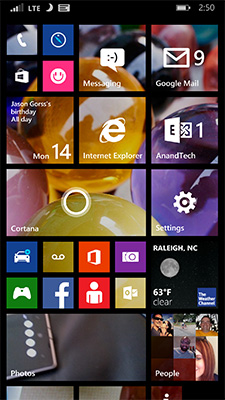
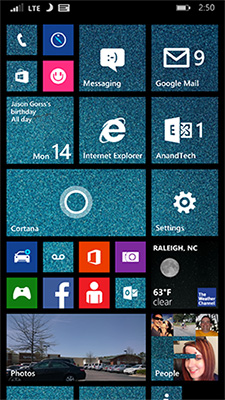
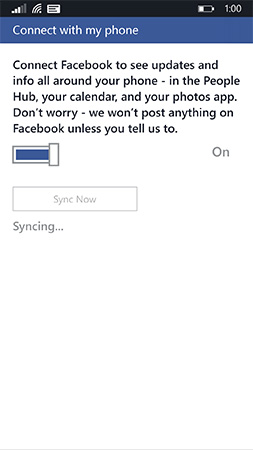








111 Comments
View All Comments
rudder - Tuesday, April 15, 2014 - link
I have the $59 Nokia 520. great phone with GPS, camera, SD slot. I have been using a windows phone for almost 2 years now. My wife has an android phone and the kids have iphones. I like the windows UI the best out of all of those.The problem continues to be the app store. It takes forever for popular apps to show up. Or they never show up. I shop and Kroger and they have a nice app for android and iOS. Still no windows version. Just one example but this is the most frustrating aspect of having a windows phone.
EddyKilowatt - Tuesday, April 15, 2014 - link
Finally, the elephant in the room: Apps. No, Microsoft, NOT the latest Flappy Bird or whatever the flavor of the month is, that you will dutifully get ported for you. It's the thousands upon thousands of small specialized apps, like the above-mentioned retail store app, or the one for controlling my new smart TV, or the one that remote-starts my new Nissan. ALWAYS these apps are "now available for iOS and Android". SELDOM and I mean like <1% of the time (and shrinking) are they available for Win Phone. When was the last time you saw Windows mentioned in an app ad?I know because I've had the original Lumia 900 for two years and am just in the process of deciding what to replace it with. I would love to another Nokia with a nice camera, but I'll just feel like "fooled me twice, shame on me" if I go Windows Phone again.
hangfirew8 - Tuesday, April 15, 2014 - link
One such small "killer app" is a Data Sense replacement, since AT&T deletes this absolutely essential App from WP8.Jonahkirk - Wednesday, April 16, 2014 - link
Data Sense is built into 8.1 if you get the developer preview (even on my ATT Lumia 920)Romberry - Wednesday, April 16, 2014 - link
Yes, it's in the developer preview. I hope that when AT&T releases their OTA update that they don't take it out...but I'd almost bet that they do.Klimax - Tuesday, April 15, 2014 - link
Some things to note:1)What for is powerful hardware, when you kill it by software stack? (Android) Chase after hardware is mostly misguided thing if it doesn't have real effect. (And that is mostly true for WP, too optimized) Or rather forced to compensate for bad software.
2)Reminder html5 test is testing unfinished specs and thus its score is useless. (What is support now may turn up as obsolete unsupport) Or did everybody forgot lesson of IE6?
3)" It’s no coincidence that the two players that do have that feature also derive revenue from selling advertising against user data."
That's Google, not Microsoft so it is mostly wrong.
akdj - Tuesday, April 22, 2014 - link
"3)" It’s no coincidence that the two players that do have that feature also derive revenue from selling advertising against user data."
That's Google, not Microsoft so it is mostly wrong."
Google AND Apple. IOW; in your quote 'the 2 players.' ;)
HTML 5...useless? LoL. Tell that to the 90% of real 'players' (YouTube? Facebook?) on the web while Flash goes the way of the DoDo, even Android has abandoned Flash support..Adobe isn't refining Flash for mobile any longer. HTML 5, while still being 'refined' is certainly FAR from 'unfinished specs' rendering Anand's measurements/'scores useless'. IE6? It's 2014. The ONLY one that needs to 'remember that lesson' is MS. Not you, not me, not 'us'. Just. Microsoft.
I'll agree whole heartedly with your first point although I'm not sure it gold water for Window's phones. They're still babies as is Win 8.1. As this is really the biggest and most significant update to the handset yet. Opening their A/SPK and providing an optimized platform for developers, IE XCode, they'll make in roads with developers. I've not spent real time with any Win phone but a colleague of mine at the radio station refuses to use anything but his year and a half old Nokia. He LOVES it and isn't interested in a different platform. As Anand mentions in the article, those in the camp seem content for the most part. Point being this is the FIRST round of Window's handsets using recent silicon. They've NOT chased fluency of the GUI with 'specs' and faster, more powerful silicon ala Samsung. TouchWiz is a HOG...And that added layer of peanut butter...I mean java script to eat through as well as the default apps installed by the carriers mandates hearty silicon JUST to achieve parity with iOS fluency. That said ...Apple isn't resting on their laurels when it comes to graphic and computational power. Look at the 5s/Air/rMini reviews. The A7 is a MONSTER. And 7.1, much like 8.1 on Windows slapped a lot of Mosquitos out of the way born from the virgin rewrite of iOS 7's rewrite for the ground up. Again, these are infants. The OS'es. We've been computing on our desks for 30 years give or take a decade pending your wealth in the 70s/80s. Mobile computing is really REALLY young. While we've had cell phones for decades, the 'smart' phone reimagined by blackberry....evolved/revolutionize by iOS in 2007 & Android '08---we're not even a decade into this serious computational paradigm. Many (excluding those of us geeks hanging and commenting on boards such as this) are finding iPad or Surface or the latest incarnation of Note/Nexus tablet computing to be ALL they need! Facebook, surfing and reading, music and media, email and gaming, social media and communication via FaceTime and iMessage...the list gets HUGE when you add the 2,000,000+ apps/software available in the Play and App Store. More software is available (and for significantly Less $) than any time in HISTORY! That's awesome. And faster, more powered I, and more efficient 'guts' IMHO is a welcome addition. Not for the sake of powering the basic, default UI but the option to access more data faster, play bleeding edge games, lower latency creative (audio, drawing, video manipulation, etc)... Faster radios and LTE infrastructure ...we're JUST getting a peak of the future. And Moore's Law seems to have jumped ship (desk and laptops) to the skiff...and the mobile platform. Intel is jumping HEAD FIRST...That should tell ya what the real 'players' are thinking. Did you see any of the reactions from Intel, Qualcomm, et al when the 64bit A7 dropped? If not, spoiler...so did ALL of their jaws. Snapdragon is aiming for their 64bit chips late this year, early next. Qualcomm ...maybe first or second quarter of '15. Intel is building out 64bit ULV chips as we speak and Haswell was a serious update efficiency-wise in comparison to ivy and sandy bridge...not to mention the phenomenal increase in iGPU performance. While you absolutely MIGHT be right on all accounts it would be sad if the barriers aren't continuously being pushed and more companies 'play'. Competition helps ALL OF US, as well as the companies doing the innovation from the polyurethane companies to the radio producers, SoC and silicon providers to the display and optic development for Gosh Sake...DON'T slow down! Keep it going!!!
J
akdj - Tuesday, April 22, 2014 - link
My apologies for the length and typos! Anand...is it mobile only or just the response 'system' that doesn't allow for editing? Seems like I remembered a small edit button post, posting;)...if that makes any sense. Anyway...hopefully you understand my points. All in fun and enjoyment of technology...I wasn't trying to come across as a 'dick'. If my initial response did, my apologiesJ
RollingCamel - Tuesday, April 15, 2014 - link
No T9?Da W - Tuesday, April 15, 2014 - link
Just bought an HTC 8x on ebay, going back to WP8 baby!Got an HTC ONE for SALE! Good bye android, you never did what i needed the way i needed it!